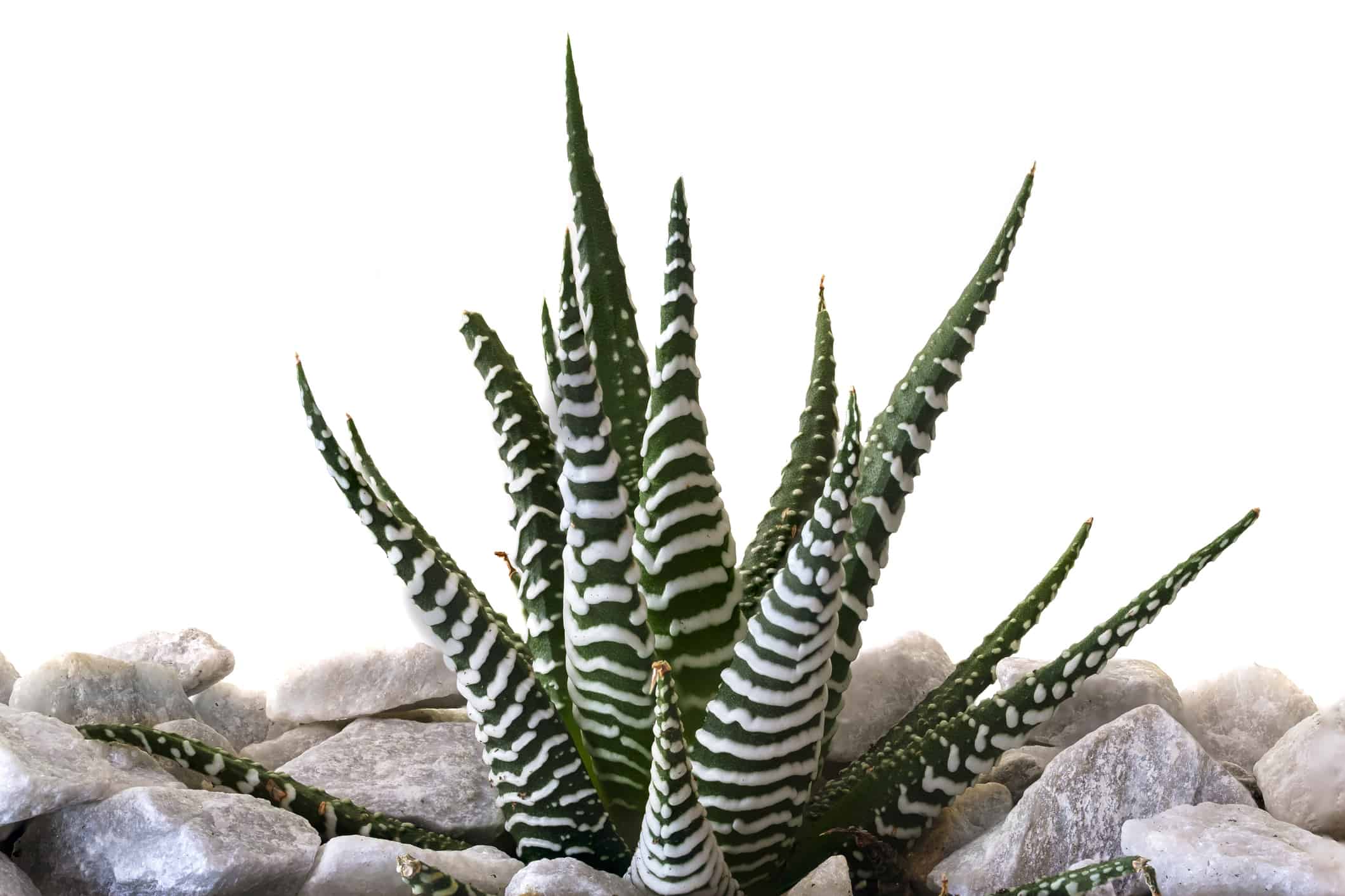Haworthia, a genus of succulent plants originating from Africa, is often referred to as zebra cactus due to its striking striped appearance. The rosettes formed by these plants are usually stemless and come in many different cultivars that are popular with plant collectors. These cultivars range from those with thin leaves that form an attractive star-shaped pattern to the more unusual varieties with thick cushion-like foliage.
These zebra succulents grow in a single clump or group formation and produce small white flowers during the winter when growing conditions are ideal. They require minimal care but can benefit from regular watering and occasional fertilization. Zebra succulents make great house or garden plants since they thrive in bright indirect light and their low maintenance requirements make them suitable for novice gardeners too! Here are some of our favorite varieties of zebra succulents.
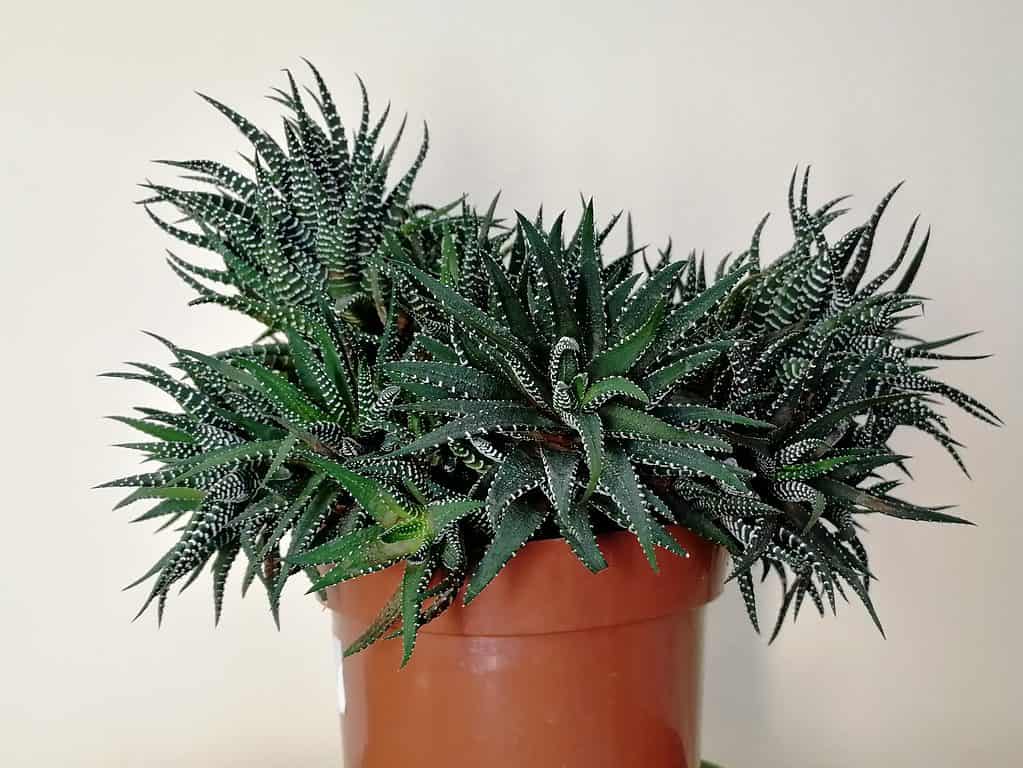
There are hundreds of cultivars of Haworthia or Zebra Plants
©Igor Poluchin/Shutterstock.com
1. Haworthia – Glabrata
Haworthia attenuata v. glabrata is a succulent houseplant with a bright green rosette of narrow leaves that are covered in raised white dots on both sides. This plant is fairly easy to care for and can tolerate low light levels indoors, making it an ideal choice even for beginners who may not have the most experience tending to plants. It’s important to use a deep pot when planting, as they grow deep roots and produce clusters of new offsets around their base. To ensure healthy, strong roots that are able to survive long periods without water, be sure the container you choose has drainage holes and only water infrequently.
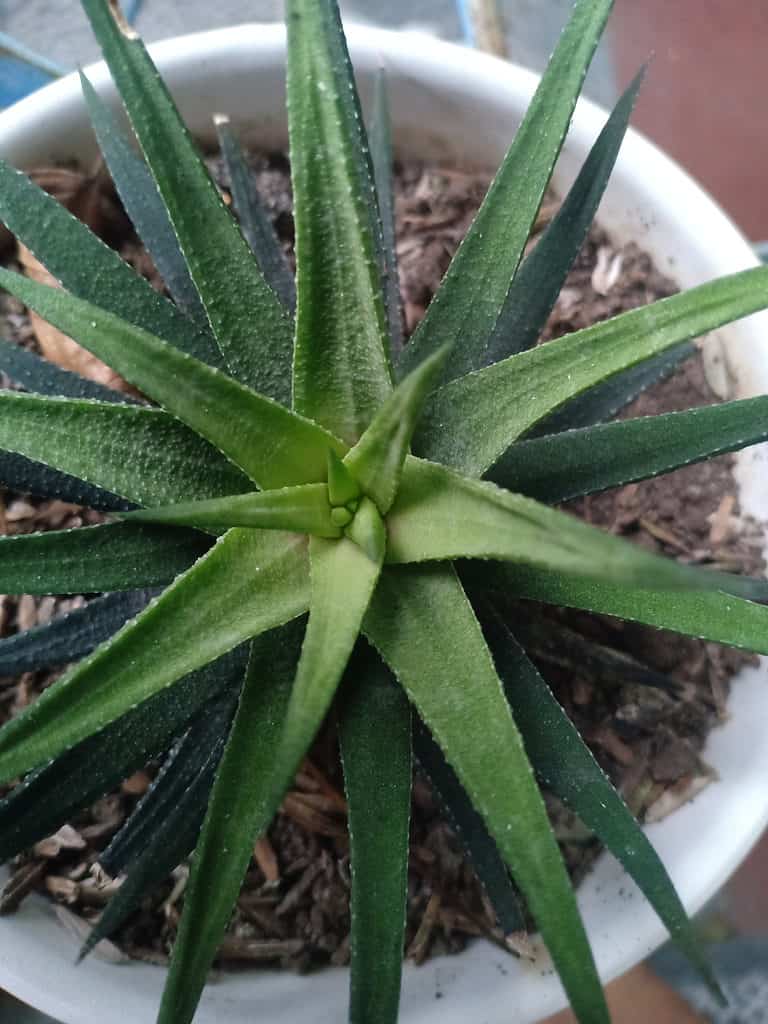
Haworthia attenuata v. glabrata is a succulent houseplant with a bright green rosette of narrow leaves that are covered in raised white dots on both sides.
©Hilra97/Shutterstock.com
2. Haworthia – Hankey Dwarf Aloe
The Hankey Dwarf Aloe, also known by its scientific name Haworthiopsis attenuata var. radula, is a small succulent that looks great in any garden or windowsill. It forms rosettes of green leaves densely covered with white spots on both sides and can reach up to 6 inches tall when mature. The individual leaves can reach 3 inches long after several years of growth, and the plant produces offsets for a clump effect. In the springtime, these plants produce flowers that are white with red veins, perfect for adding some color to your garden!
When caring for this plant, it’s important to keep it in bright indirect light (think an east-facing window), as too much direct sun will damage its foliage. This hardy succulent can survive outdoors year-round if you live within zones 10a to 11b. However, those living outside these zones should bring their pot indoors during cold spells, as temperatures below freezing could cause permanent damage. With proper care and maintenance, your Hankey Dwarf Aloe should provide years of enjoyment!
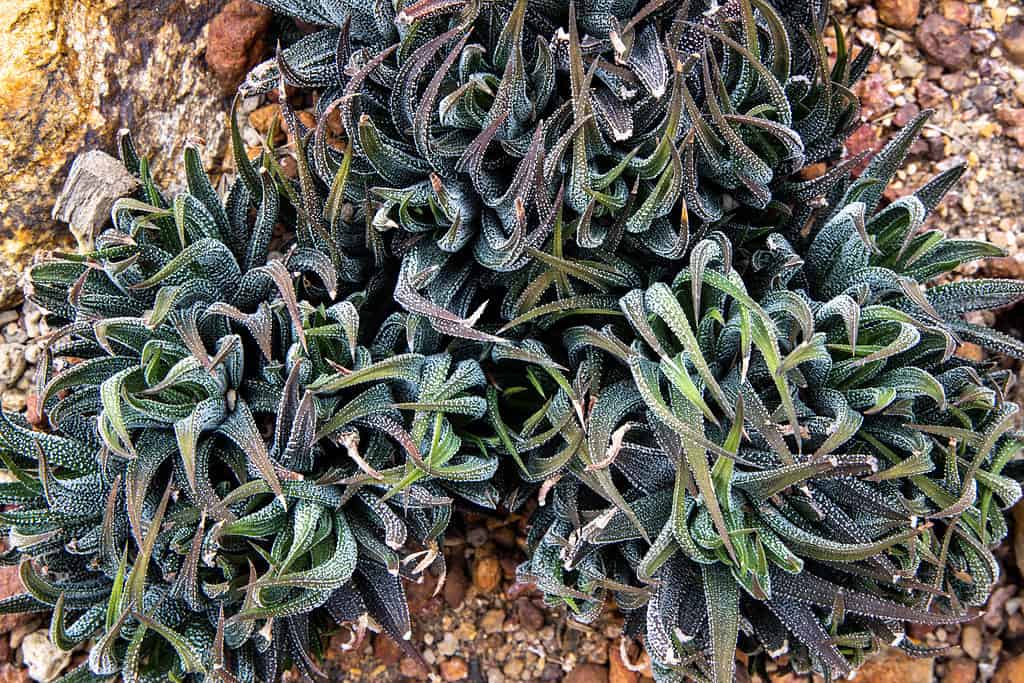
The Hankey Dwarf Aloe, also known by its scientific name Haworthiopsis attenuata var. radula, is a small succulent that looks great in any garden or windowsill.
©rivermartin/Shutterstock.com
3. Haworthia – Big Band
Haworthia ‘Big Band’ is an incredibly low-maintenance and slow-growing succulent that features pointed green leaves adorned with white stripes. During the summer months, it produces small white flowers.
When growing this plant, it’s important to provide well-drained soil away from reflected heat. Established plants can survive on minimal watering during hot seasons. Big Band absolutely thrives in warm climates and looks awesome in container gardens. Additionally, due to its low maintenance needs and size, this succulent makes for a great houseplant that can easily sit atop your windowsill!
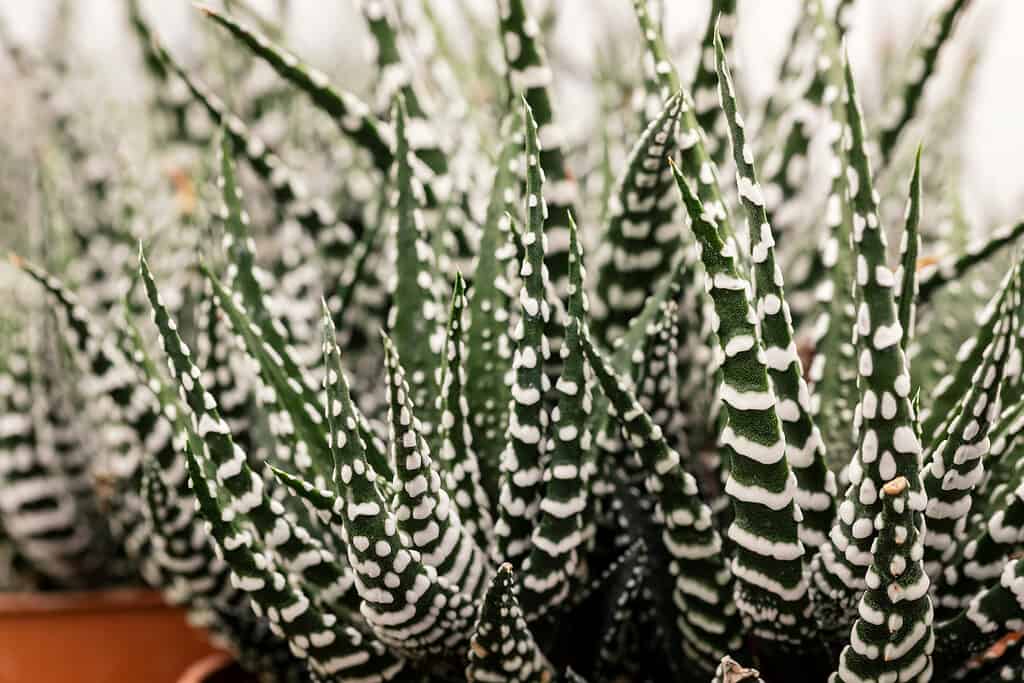
Haworthia ‘Big Band’ is an incredibly low-maintenance and slow-growing succulent that features pointed green leaves adorned with white stripes.
©Fabrizio Guarisco/Shutterstock.com
4. Haworthia – Super White
Haworthia fasciata ‘Super White Zebra’ is a stunning variety of the popular Zebra Plant. Its leaves are patterned with broad white stripes, making them more eye-catching than regular zebra plants. Unlike many succulents, Haworthia thrives in low light and makes an excellent houseplant for those new to gardening. They are resilient to pests and diseases and require little care. Just make sure you give them deep containers with drainage holes so they can get enough water without getting soggy.

Haworthia fasciata ‘Super White Zebra’ is a stunning variety of the popular Zebra Plant.
©DesignTop/Shutterstock.com
5. Haworthia – Alba
Haworthia fasciata ‘Alba’ is a stunning, upright star variety that features rosettes of spiky, dark green leaves with white ridges running across them. In the summertime, it produces stalks of beautiful white flowers. Haworthia plants are excellent for adding an interesting form and texture to desert landscapes, rock gardens, and even houseplants. They grow best in soil that is sharply drained and should be kept in bright but filtered light for optimum growth.

Haworthia fasciata ‘Alba’ is a stunning, upright star variety that features rosettes of spiky, dark green leaves with white ridges running across them.
©Visharo/Shutterstock.com
6. Haworthia – Royal Albert
Haworthia fasciata Albert (or ”Royal Albert”) is a small-sized perennial succulent plant native to South Africa. It can grow solitarily or clustered and reaches up to 4 inches in height once it matures. Its distinctive thick leaves are usually conical and green, with multiple round white lumps throughout its surface. Depending on the amount of light it receives, the leaves may turn reddish-black occasionally. The flowers bloom in early springtime, typically on long and dense stems. However, they are not very noticeable as they tend to be white and tiny. This beautiful little plant is perfect for any windowsill garden or indoor space due to its petite size and low maintenance requirements!
7. Haworthia – Reinwardtii
Haworthiopsis reinwardtii is a low-maintenance succulent with thick green foliage and raised white dots on the outside surface of the leaves. This species has an upright growth habit, distinguished from H. coarctata by its more slender leaves. It is well-suited for indoor growing conditions, making it a good starter plant for beginners. It can tolerate low light indoors and rarely suffers from common pests or diseases when given great drainage. This plant is very drought-tolerant due to its strong roots.
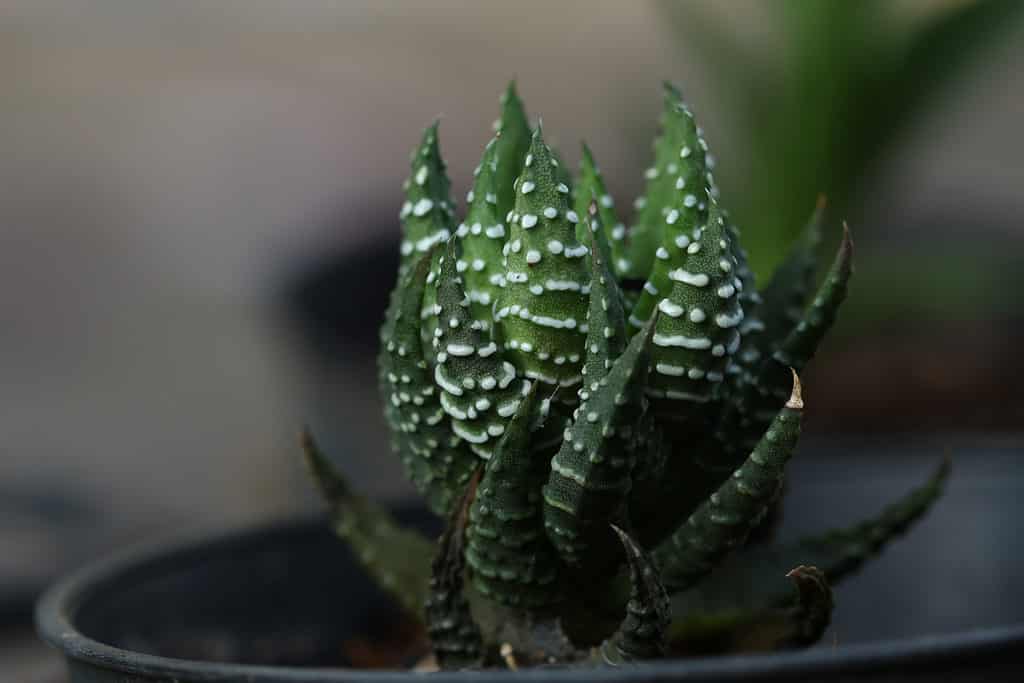
Haworthiopsis reinwardtii is a low-maintenance succulent with thick green foliage and raised white dots on the outside surface of the leaves.
©M Nurdin Asfandi/Shutterstock.com
8. Haworthia – Tegelberg
Haworthiopsis limifolia var. Tegelberg, also known as the Fairy Washboard plant, is a selected form of Haworthia with raised green ridges banding its leaves. Its foliage tends to be slightly narrower and more concave than the type species, making it an attractive addition to any home. This variety grows slowly but can stack up tall over time if given adequate care and attention. They are not prone to common pests or diseases and thrive on minimal watering.

Haworthiopsis limifolia var. Tegelberg, also known as the Fairy Washboard plant, is a selected form of Haworthia with raised green ridges banding its leaves.
©Sunflow Studio/Shutterstock.com
9. Haworthia – Concolor
Haworthiopsis attenuata ”Concolor” is a unique plant with an eye-catching form and pattern. It has long, slender leaves that are dotted with small white specks and can range in color from lime to dark green. Its bumpy texture adds to its charm. The tall flower stalks will produce tiny white blossoms, but they can be cut away without damaging the plant itself.
Thanks to their low light tolerance, Haworthia are perfect houseplants for beginners or those who lack experience with gardening. They require minimal maintenance and care, making them a great option for busy individuals who still want to enjoy the beauty of indoor plants!
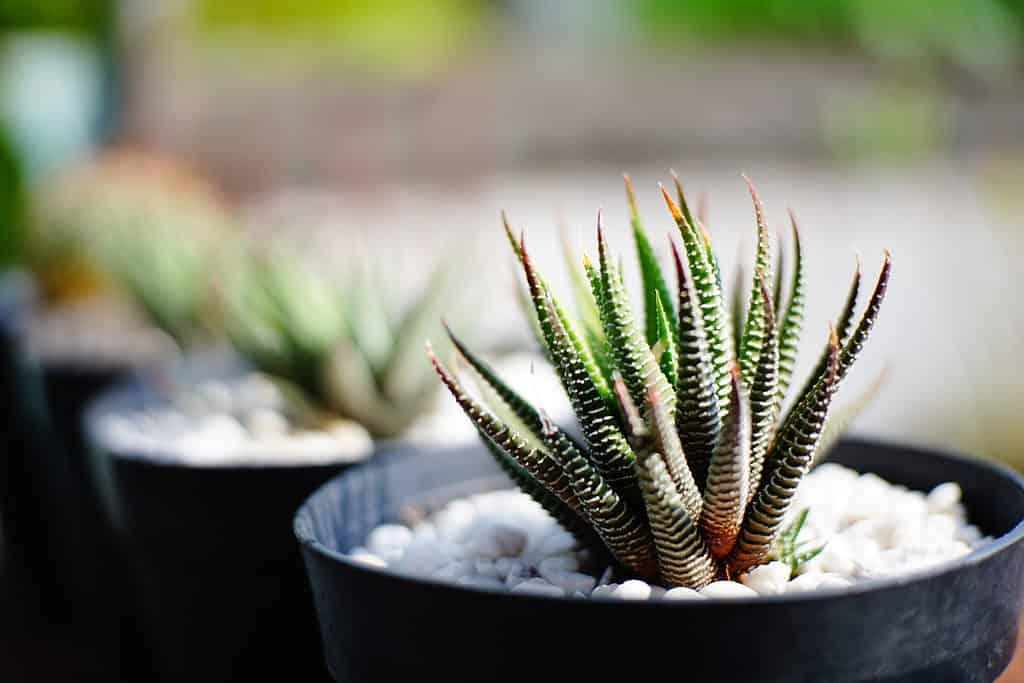
Haworthiopsis attenuata ”Concolor” is a unique plant with an eye-catching form and pattern.
©rattanatat chimkong/Shutterstock.com
10. Haworthia – Chocolate
Haworthia ”Chocolate” is a rare cultivar with an attractive form and unique coloring. Unlike most Haworthia, this variety has a dark reddish-brown coloration which makes it stand out from the rest. Its thick triangular leaves have a rough texture and form a loose rosette over time. This slow-growing plant may eventually become a dense clump.
Fortunately, Haworthia are able to tolerate low indoor light making them great houseplants for everyone, even beginner gardeners! They don’t require much attention and rarely suffer from common succulent pests or diseases.
11. Haworthia – Splendens
Haworthia magnifica var. splendens is an attractive and easy-to-care-for zebra succulent. It has a unique appearance, with each leaf sporting a large, rough window at the tip, which allows light to penetrate deeply into its leaves and create streaks of pale zebra stripes.
This plant can tolerate high temperatures by slowing down or entering dormancy during the summer months, but it should not be overwatered or fertilized during this period. Instead, give more water during the winter when it is growing again. Haworthia plants are slow growers, so they tend to stay small in their pots. However, they will produce offsets around their base which can either be left to form a dense clump or pulled off and transplanted.
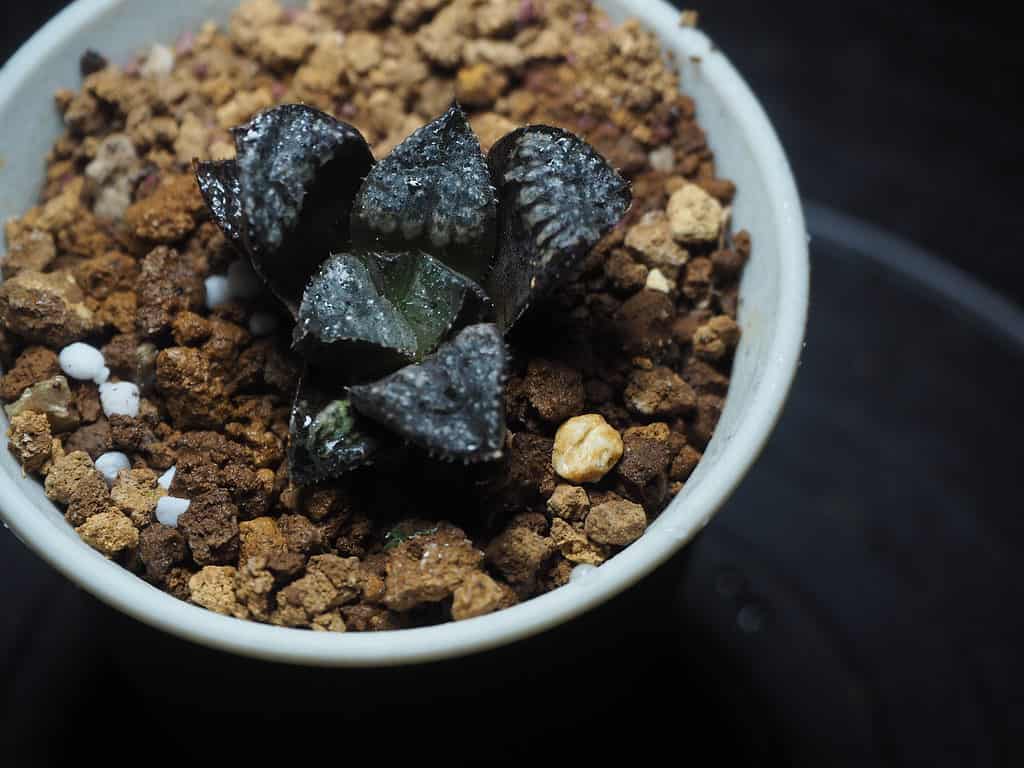
This plant can tolerate high temperatures by slowing down or entering dormancy during the summer months, but it should not be overwatered or fertilized during this period.
©ZEEN KAWEE/Shutterstock.com
Summary of 11 Types of Zebra Succulents
- Haworthia – Glabrata
- Haworthia – Hankey Dwarf Aloe
- Haworthia – Big Band
- Haworthia – Super White
- Haworthia – Alba
- Haworthia – Royal Albert
- Haworthia – Reinwardtii
- Haworthia – Tegelberg
- Haworthia – Concolor
- Haworthia – Chocolate
- Haworthia – Splendens
Up Next
Thank you for reading! Have some feedback for us? Contact the AZ Animals editorial team.

